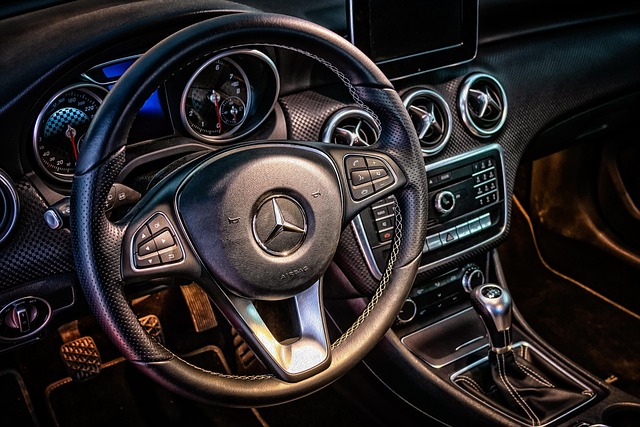In the ever-evolving world of automotive financing, one question continues to puzzle potential car owners: Is leasing a car cheaper than buying in 2025? With rising interest rates, advancements in electric vehicles (EVs), and shifting market dynamics, the answer isn’t straightforward. It depends on your driving habits, financial situation, and long-term goals. This article breaks down the key differences, costs, pros, cons, and trends to help you decide. We’ll use clear comparisons, including tables and bullet points, to make it easy to understand whether leasing or buying aligns with your needs in 2025.
Whether you’re eyeing a fuel-efficient sedan, a family SUV, or the latest EV, understanding these options can save you thousands. Let’s dive in.
What Is Car Leasing?
Leasing a car is essentially renting it for a set period, typically 2-4 years, with an option to buy at the end. You pay for the vehicle’s depreciation during the lease term, plus interest and fees, rather than the full purchase price. At the lease’s end, you return the car, buy it out, or start a new lease.
In 2025, leasing has gained popularity due to its flexibility. For instance, with the surge in EV technology, many drivers prefer leasing to access the latest models without committing long-term, as battery tech and features evolve rapidly. Lease terms often include maintenance packages, and payments are based on the car’s residual value—the estimated worth at lease end.
Key elements of a lease include:
- Down Payment: Usually lower than buying, often 10-20% of the car’s value or even zero with promotions.
- Monthly Payments: Cover depreciation, not the full cost.
- Mileage Limits: Typically 10,000-15,000 miles per year; exceeding this incurs fees (around $0.15-$0.30 per mile).
- End-of-Lease Options: Return, buy, or trade-in.
Leasing appeals to those who want lower upfront costs and the thrill of driving a new car every few years.
What Is Buying a Car?
Buying a car means financing the full purchase price through a loan or cash, leading to ownership once paid off. In 2025, buying remains the traditional route for those planning to keep a vehicle long-term, especially with average car prices hovering around $48,000.
When you buy:
- Financing: Auto loans with terms of 60-72 months, interest rates averaging 7-9% in 2025 due to economic factors.
- Ownership: No restrictions on mileage or modifications; you can sell or trade anytime.
- Equity Building: As you pay down the loan, you build equity, which can be used for future purchases.
Buying suits drivers who rack up high mileage or prefer customizing their ride without penalties.
Cost Comparison: Leasing vs. Buying in 2025
To determine if leasing is cheaper, let’s compare costs. In the short term (3-5 years), leasing often wins with lower monthly payments. However, over 10+ years, buying can be more economical if you keep the car post-loan. High interest rates in 2025 make loans pricier, tilting the scale toward leasing for many.
Consider a mid-range sedan like a Honda Civic, priced at $28,000 in 2025.
| Aspect | Leasing (3-Year Term) | Buying (5-Year Loan) |
| Down Payment | $2,000 | $5,000 |
| Monthly Payment | $350 | $450 |
| Total Cost Over Term | $14,600 (including fees) | $27,000 (including interest at 8%) |
| Mileage Allowance | 12,000/year | Unlimited |
| Ownership at End | None (return or buy for $15,000 residual) | Full ownership |
| Additional Fees | $0.25/mile overage, disposition fee (~$400) | None |
| Total 5-Year Cost (if leasing twice) | ~$29,200 | $27,000 |
Assumptions: 8% interest rate, no taxes included for simplicity. Actual costs vary by credit score and location.
From the table, leasing saves ~$100/month initially but could cost more if you lease repeatedly without building equity. Average lease payments in 2025 are $659, slightly below loan payments of $670. Factor in gas, insurance (similar for both), and maintenance—leases often cover warranties, reducing out-of-pocket expenses.
Taxes differ too: Leasing taxes monthly payments; buying taxes the full price upfront. In high-tax states, this makes leasing appealing.
Pros and Cons of Leasing a Car in 2025
Leasing isn’t always cheaper, but it has distinct advantages. Here’s a balanced look:
Pros of Leasing:
- Lower Monthly Costs: Payments are 20-30% less than loans, freeing up cash for other expenses.
- Access to Premium Models: Afford luxury or EVs you couldn’t buy outright.
- Warranty Coverage: Most leases align with manufacturer warranties, minimizing repair costs.
- Flexibility: Upgrade every few years to newer tech, especially EVs with improving range and features.
- Tax Benefits for Businesses: Deductible as an expense.
Cons of Leasing:
- No Ownership: You walk away with nothing at the end unless you buy out.
- Mileage Restrictions: Ideal for low-mileage drivers (under 15,000/year); penalties add up for commuters.
- Potential Fees: Wear-and-tear charges, early termination penalties (up to several months’ payments).
- Long-Term Expense: Continuous leasing means perpetual payments without equity.
- Customization Limits: Can’t modify the car extensively.
Pros and Cons of Buying a Car in 2025
Buying offers permanence but higher immediate costs.
Pros of Buying:
- Build Equity: Own an asset that can be sold or traded, potentially recouping value.
- No Limits: Drive as much as you want; perfect for road trips or high-mileage jobs.
- Long-Term Savings: After payoff, no more payments—drive payment-free for years.
- Customization Freedom: Modify as desired without voiding terms.
- Resale Value: In 2025, EVs and hybrids hold value well due to demand.
Cons of Buying:
- Higher Upfront and Monthly Costs: Larger down payments and payments strain budgets.
- Depreciation Hit: Cars lose 20-30% value in the first year; you’re on the hook.
- Maintenance Responsibility: Post-warranty repairs fall on you.
- Interest Expenses: With 2025 rates high, loans add thousands in interest.
- Outdated Tech: Stuck with older features if you keep it long-term.
Key Factors to Consider in 2025
2025 brings unique trends influencing the lease vs. buy debate. High interest rates (7-9%) make buying loans expensive, pushing more toward leasing. Lease prices may drop due to increased inventory and competition, with averages potentially declining from 2024 levels.
EV trends are pivotal: Federal incentives like the $7,500 tax credit apply to leases more easily, as dealers can pass them on directly. Leasing an EV avoids battery degradation worries, as you return it before issues arise.
Other factors:
- Driving Habits: Lease if under 12,000 miles/year; buy otherwise.
- Financial Stability: Good credit scores secure better lease deals.
- Market Volatility: Lease returns are down 41% in 2025, potentially increasing used car prices and making buying used a viable alternative.
- Inflation and Economy: If rates fall mid-2025, buying could become more attractive.
- Personal Goals: Want the latest safety tech? Lease. Building wealth? Buy and hold.
Use online calculators to plug in your numbers—sites like Edmunds or Kelley Blue Book offer tools tailored to 2025 data.
When Should You Lease vs. Buy in 2025?
Lease if:
- You drive low miles and love new cars.
- Budget prioritizes cash flow over ownership.
- Interested in EVs with evolving tech.
Buy if:
- Plan to keep the car 5+ years.
- High mileage or family needs require flexibility.
- Equity building fits your financial plan.
A hybrid approach: Lease now, buy later if rates drop.
Conclusion: Is Leasing Cheaper in 2025?
Leasing is often cheaper in the short term in 2025, thanks to lower payments and EV incentives, but buying wins long-term for ownership and savings. Assess your lifestyle—leasing suits 30-40% of new car transactions today. Consult a financial advisor or dealer for personalized advice.
Ultimately, neither is universally “cheaper”—it’s about what fits your wallet and wheels. Drive smart in 2025!










